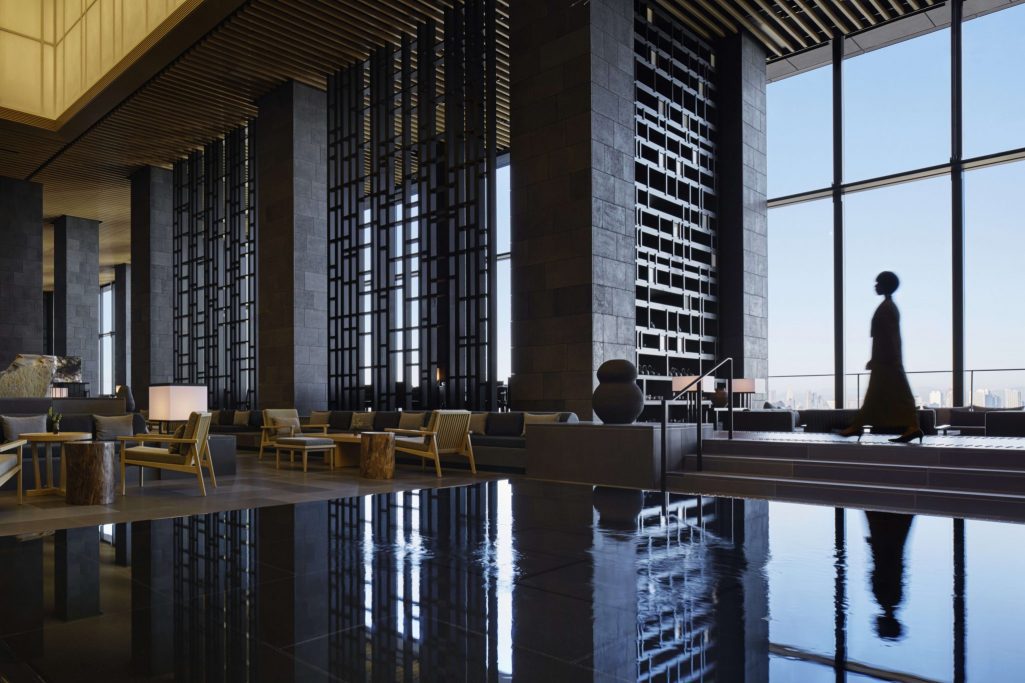Skift Take
The Aman model of creating sanctuaries in remote settings has proven quite successful since the company's founding in 1988. But now, Aman is looking to translate its ethos into urban spaces.
Aman Hotels is expected to officially announce this week that it is opening a hotel in Manhattan. However, the New York real estate scene has been buzzing about the possibility of Aman’s first urban venture in the United States (Aman has resort properties in Utah and Wyoming) for some time.
Vladislav Doronin, the Russian mogul who owns Aman, purchased the upper floors of the Crown Building, located at 5th Avenue and 57th Street, two years ago. OKO Group, Doronin’s international real estate development firm, is awaiting the okay from New York City officials to begin work on what will be an intimate hotel with a score of ultra-luxury condominiums.
Known primarily for its idyllic hotels located in remote locations, the New York project is part of Aman’s new tack into cities. Although Aman already has a hotel in Tokyo that opened at the end of 2014, that Aman has a specific urban game plan is somewhat new, according to Roland Fasel, chief operating officer. “Up until three or four months ago, we didn’t have a strategy. The magic of the brand has always been that it hasn’t been forced” and growth has been somewhat organic.
>> Fasel spoke at Skift Global Forum last month. You can read about his comments here
But now, says, Fasel, while Aman continues to pursue its “pathfinder spirit, looking for new destinations to open up in South America and Africa,” the idea of bringing the brand into big cities “needs more of a strategy and a structure in the business,” given the challenges with getting investment and development approvals in urban areas.
While Fasel says the urban hotels will have more rooms than remote resorts (Tokyo has 84 rooms; Manhattan is expected to have about the same), the pillars of Aman will still be supporting these city sanctuaries.
Among those pillars, notes Fasel, are high-touch service, creating experiences that derive from the local DNA, a holistic wellness component, uncomplicated luxury and understated elegance, and generosity of space. The orienting ethos of it all, says Fasel, is the idea of welcoming people into a home.
In that regard, Aman Tokyo may be a role model. Guest rooms, lofty sanctuaries in the sky, are modeled after traditional Japanese residences. The smallest rooms are 764 square feet, larger than the norm. Room rates are also higher than the norm, at 70 percent above Tokyo’s average daily rate, according to Fasel. A large spa offers locally-inspired treatments, while the pool area on the 34th floor provides stunning views of the Tokyo skyline and Mt. Fuji beyond.
All of the urban builds will have a residential component, although that’s not really a new concept for Aman, and is now a norm for new luxury builds. According to Fasel, since the time the brand started in 1988, the resorts have always included villas or condominiums for sale. That said, in urban spaces, he says, “the cost of entry is so high in major cities that we have to have a residential space.”
Fasel expects the urban client mix to favor the business traveler, although leisure travelers will be well-represented. Having a presence in large cities may also increase brand recognition, which, Fasel says, “will catapult the brand to next level.”
That said, don’t expect an Aman in every major city. According to Fasel, “there are only a handful of cities where we can justify entering.” But in those places that rate an Aman, Fasel says the brand will bring “a small piece of paradise” into otherwise frenetic and congested places.
Have a confidential tip for Skift? Get in touch
Tags: amanresorts, luxury
Photo credit: The lobby of Aman’s property in Tokyo, which was the first urban hotel in its portfolio and is the model for the planned expansion to New York City. Aman
